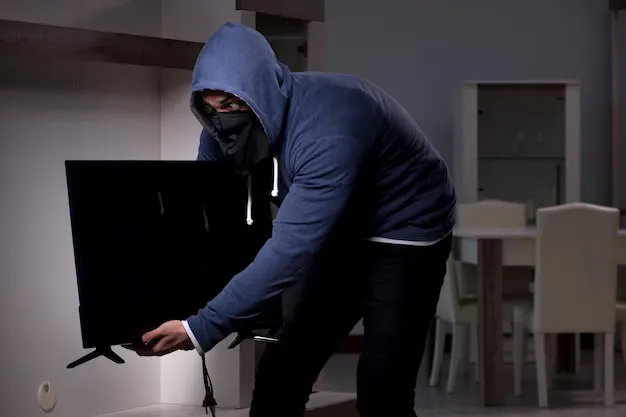Home security sounds like a slam-dunk way to keep your place safe, cameras, alarms, locks, the works, but most of the time, it’s like locking the gate after the cows ran off. You slap these systems up thinking they’ll block trouble, but they usually just show you the mess after it’s too late. With break-ins or fires hitting fast, it stings to realize your pricey setup is more about recording the damage than stopping it. This piece lays out why that happens, digging into how these things are set up, what they skip, and why you’re left cleaning up instead of dodging the hit. Let’s get into it.
Waiting for Trouble to Hit
Most security systems sit around until something goes wrong, then jump in. Like, a burglar alarm waits for the door to get kicked in or a window to shatter before it wails. By that point, the thief’s already inside grabbing your gear. Same deal with smoke alarms—they start screeching when the flames are already eating your sofa. These things are like a yell after the fight’s over; they tell you what happened, not how to stop it. Companies push them as “safety,” but they’re really just proof of the mess after the fact.
Help Takes Forever
Even when the system kicks off, getting someone there is a drag. Say a sensor catches movement at midnight—it pings a monitoring crew, who call you or the cops, which can eat up 5-10 minutes if you’re lucky. If you’re crashed out or not home, you’re not picking up, and police might roll in 15-30 minutes later—longer if you’re out in the sticks. I’ve heard tales of a guy in Lahore waiting 25 minutes for a patrol after his alarm went nuts, and the crook was long gone with his cash. That lag leaves your place wide open.
Thinking You’re Safe When You’re Not
A lot of folks stick up a security sign or a camera and feel like kings, but that’s a setup for a fall. That “Protected by Whatever” sticker might spook a rookie thief, but pros laugh it off if the system’s a dud or not watched right. I’ve seen neighbors with cameras covered in cobwebs, thinking they’re golden, but they’re not. That fake security can make you sloppy—leaving the back door open or skipping checks—until you wake up to a busted window and a missing TV.
Cameras Just Watch
Cameras are all over now, but they’re more like nosy neighbors than guards. You get a Ring or a cheap cam, and it films some jerk breaking your glass, but it doesn’t stop them. The video might help the cops nab the guy later, but your smashed lamp’s still toast. Even with phone alerts, you’re chasing the problem after it starts—rushing back or calling help while the damage piles up. A pal got a perfect shot of a thief on his cam, but the dude was out the door before he could blink.
Alarms Kick In Too Slow
Alarms are loud, yeah, but they usually wait until the trouble’s already in. A door sensor needs the door open, a glass-break one needs the crash—by then, the intruder’s in your kitchen. Even the best setups take a beat to figure it out and blare, giving the bad guy time to snatch something and run. I knew a dude whose alarm went off after a window broke, but the thief was gone with his laptop in 60 seconds flat. The noise might scare them, but it’s usually after they’ve hit you.
Holes in the Setup
No system covers every corner, and that’s a big weak spot. Most focus on doors and windows, leaving gaps like backyards, garages, or cellar doors. A thief can slip through a loose fence or a side gate, and your fancy alarm won’t care. I’ve seen houses with cams glued to the front but nothing on the alley where the break-in went down. Unless you’ve got deep pockets for a full wraparound deal—and most don’t—there’s always a way in they can use.
Power Cuts Kill It
These systems flop without power, and that’s a chink in the armor. A storm blackout or a cut wire from a clever thief can knock out your cams and alarms. Backup batteries kick in, but they’re good for maybe 4-6 hours if you’re lucky, and half the time people forget to check them. I heard about a family whose setup died during a power outage, and a break-in slid by until daylight. No juice, no protection—you’re back to hoping your old lock holds.
People Screw It Up
Folks mess up security more than the gear does. Forgetting to turn on the system, stashing a key under the mat, or blowing off alerts because they’re “always junk” can tank it all. A buddy left his door unlocked with the alarm on, thinking it’d catch anything—thief strolled right in. Even the pros can botch it—installers might skip a sensor, or you might not change passwords. That human goof turns a solid setup into a dud when it matters.
Price Doesn’t Mean Protection
Fancy systems promise the world—round-the-clock watching, smart locks—but they cost a bundle. A full rig with cams, alarms, and a service can hit $1,000 to start and $30-50 a month after. For a lot of people, that’s too rich, so they grab cheap junk—fake cams or basic alarms that don’t connect to anything. You end up with a setup that looks tough but folds when a real threat shows up, leaving you with a fat bill and a trashed house.
Doing Stuff Before Trouble Hits
The real answer isn’t waiting—it’s stopping the hit before it lands. Bright lights, solid locks, and cutting back bushes so no one hides are cheap moves that beat most systems. A neighborhood watch or a yappy dog can scare off crooks without a beep. I know a guy in Islamabad who uses motion lights and a loud mutt instead of a $500 setup, and he’s never had a problem. These proactive tricks don’t just catch crimes—they kill them before they start, which is what security should do.




